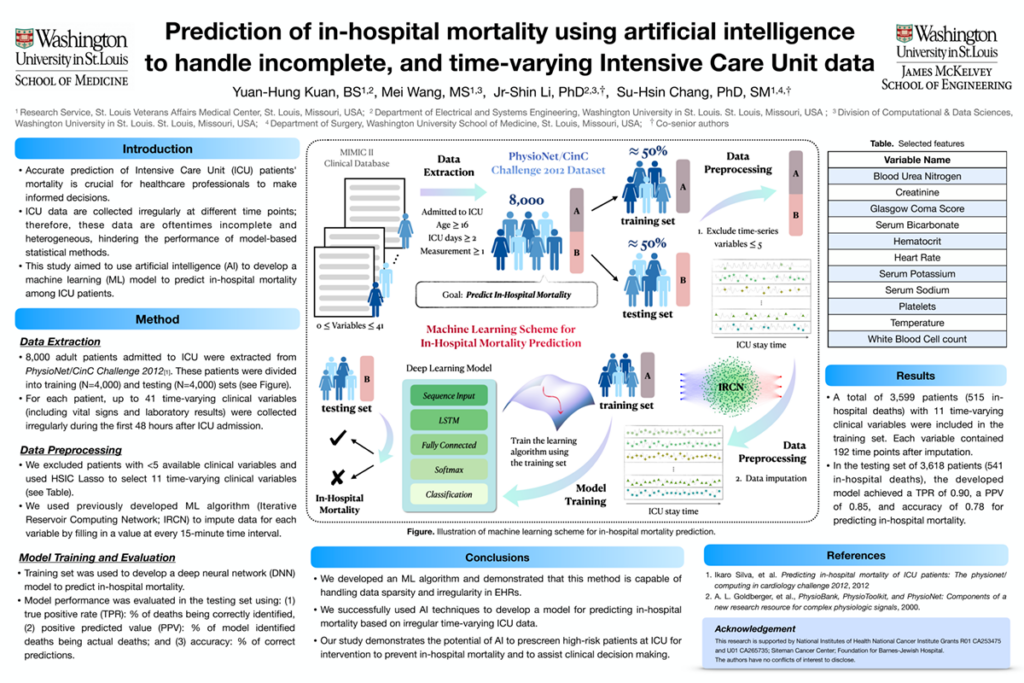
Introduction: Accurate prediction of Intensive Care Unit (ICU) patients’ mortality is crucial for healthcare professionals to make informed decisions, ultimately improving patient outcomes. However, ICU data are collected irregularly at different time points; therefore, these data are oftentimes incomplete and heterogeneous, hindering the performance of model-based statistical methods. This study aimed to use artificial intelligence (AI) to develop a machine learning (ML) model to predict in-hospital mortality among ICU patients.
Methods: We retrieved 8,000 adult patients admitted to ICU from the MIMIC II Clinical Database, a public use database provided in PhysioNet/CinC Challenge 2012. For each patient, 11 time-varying clinical variables (including vital signs and laboratory results) were collected irregularly during the first 48 hours after ICU admission. These patients were divided into training (50%) and testing (50%) sets. We then excluded patients with <5 available data points. We first used previously developed ML method to impute data for each variable by filling in a value at every 15-minute time interval. Patients in the training set were used to develop an ML model using deep neural network (DNN) to classify patients based on in-hospital mortality. The model performance was tested in the testing set using 3 metrics: (1) true positive rate (TPR): % of deaths being correctly identified, (2) positive predicted value (PPV): % of model identified deaths being actual deaths; and (3) accuracy: % of correct predictions.
Results: A total of 3,599 patients (515 in-hospital deaths) with 11 time-varying clinical variables were included in the training set. Each variable contained 192 time points after imputation. In the testing set of 3,618 patients (541 in-hospital deaths), the developed model achieved a TPR of 0.90, a PPV of 0,85, and accuracy of 0.78 for predicting in-hospital mortality.
Impact: We successfully used AI techniques to develop a model for predicting in-hospital mortality based on irregular time-varying ICU data. Our study demonstrates the potential of AI to prescreen high-risk patients at ICU for intervention to prevent in-hospital mortality and to assist clinical decision making.
Organization: Washington University in St. Louis
Kuan YH, Wang M, Li JS, Chang SH